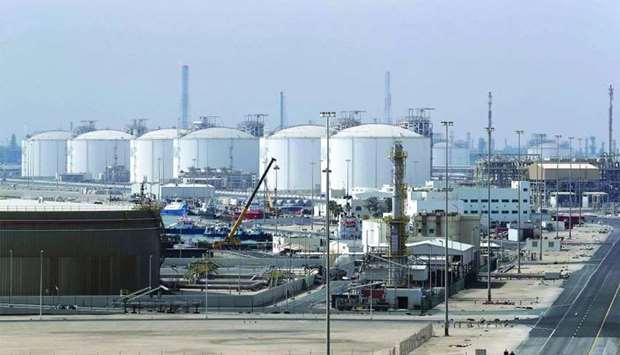Qatar’s decision to increase LNG output by 30% by 2024 will “increasingly drive Qatar’s next development phase” as the current multi-year wave of infrastructure spending begins to flatten out in terms of growth contribution, according to QNB.
The 30% increase will boost Qatar’s LNG capacity from 77mn tonnes currently to 100mn tonnes by 2024.
This increase in capacity, QNB said, will require huge investments, both onshore and offshore, including the construction of three new LNG trains to process the gas.
Beyond the direct impact on non-hydrocarbon GDP, this new investment phase, which should begin in earnest from 2020 onwards, will generate substantial multiplier effects on the wider economy, lifting demand for goods and services and driving the country’s development in line with the Qatar National Vision 2030, QNB said in its ‘Qatar Economic Insight – September’.
Non-hydrocarbon GDP is expected to gain by 5% in 2018. Continued infrastructure spending as the government focuses on completing major projects in key sectors will ensure that construction remains the backbone of the non-hydrocarbon sector with forecast growth of 15.5%.
Higher oil prices will also allow for some positive multiplier effects on domestic demand, it said.
Government policies aimed at strengthening the private sector and boosting self-sufficiency and food security will also support demand growth, QNB said.
Sectors of agriculture (8.2% growth), manufacturing (3.2% growth), transportation and storage (3% growth) are expected to be the key beneficiaries with growth in these sectors expected to pick up further in 2019.
Continued population growth, with mid-year population expected to hit a record 2.81mn in 2018 then rising further to 2.89mn in 2019, will also work to spur additional domestic demand.
For 2019 as a whole, QNB forecasts non-hydrocarbon GDP growth of 5.3%, leaving overall GDP growth at 3.2%.
And GDP growth this year is forecast to improve to 2.6% from 2017’s 1.6% out-turn, QNB said.
On the hydrocarbon side, a modest growth of 0.2% is anticipated, which would end four years of declines.
The lifting of Opec production cuts should modestly boost crude oil production, while the end of maintenance work and temporary shutdowns should start to spur a recovery in LNG output through the year.
A further pick up of 0.7% in hydrocarbon output is then expected in 2019, QNB said.



